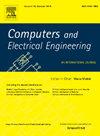An energy-aware link fault detection and recovery scheme for QoS enhancement in Internet of Things-enabled wireless sensor network
IF 4
3区 计算机科学
Q1 COMPUTER SCIENCE, HARDWARE & ARCHITECTURE
引用次数: 0
Abstract
In the era of digitalization, the proliferation of the Internet of Things (IoT) has assisted in transforming the entire world into a smarter globe. Wireless Sensor Networks (WSNs) play an important role in developing many IoT-based real-time applications. Due to energy resource constraints, there are possibilities for hardware, communication links, and software faults occurring in the IoT-enabled WSN (IWSN) environment. These faults affect the data reading and cause serious impairment in the IWSN. To alleviate this scenario, it is imperative to identify a reliable fault diagnosis technique to accurately detect and respond to faults promptly. This work proposes a novel Energy-Aware Hardware and Link Fault Diagnosis (EAHLFD) scheme to enhance the quality of service in IWSN. Initially, the suggested EAHLFD scheme applies the Hardware Fault Detection and Classification method to detect various hardware faults. The Adaptive Communication Link Fault Detection and Recovery method is then invoked in the second stage for detecting the link faults. In this method, the optimized recovery link is determined based on three factors namely: probability value, link cost, and battery energy. The efficacy of the proposed scheme has been tested under two different simulation environments (IWSN#1 and IWSN#2). From the simulation results, it is manifest that the suggested EAHLFD scheme attains a superior fault diagnosis accuracy of 99.04% as compared to existing schemes.
求助全文
约1分钟内获得全文
求助全文
来源期刊

Computers & Electrical Engineering
工程技术-工程:电子与电气
CiteScore
9.20
自引率
7.00%
发文量
661
审稿时长
47 days
期刊介绍:
The impact of computers has nowhere been more revolutionary than in electrical engineering. The design, analysis, and operation of electrical and electronic systems are now dominated by computers, a transformation that has been motivated by the natural ease of interface between computers and electrical systems, and the promise of spectacular improvements in speed and efficiency.
Published since 1973, Computers & Electrical Engineering provides rapid publication of topical research into the integration of computer technology and computational techniques with electrical and electronic systems. The journal publishes papers featuring novel implementations of computers and computational techniques in areas like signal and image processing, high-performance computing, parallel processing, and communications. Special attention will be paid to papers describing innovative architectures, algorithms, and software tools.
 求助内容:
求助内容: 应助结果提醒方式:
应助结果提醒方式:


